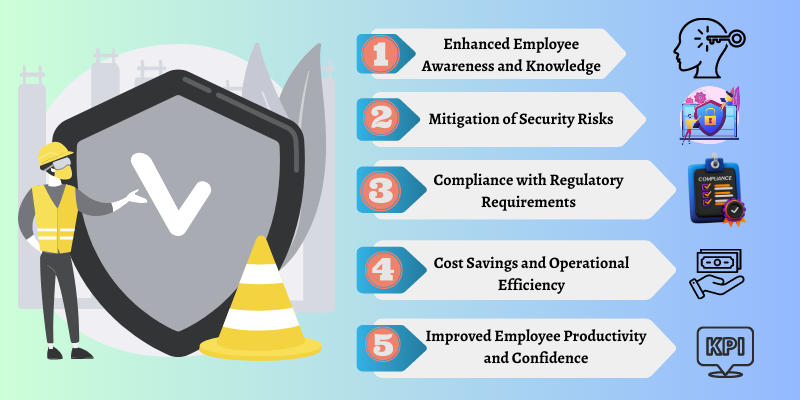In today’s fast-paced business environment, companies are constantly striving to stay ahead of the competition. One area that is often overlooked but crucial to a company’s success is compliance and safety training. In this article, we will explore the importance of compliance and safety training for companies and how it can benefit their overall success.
Compliance Training: Ensuring Regulatory Compliance
Compliance training is essential for companies to ensure that they are meeting all regulatory requirements. Failure to comply with regulations can result in costly fines, legal battles, and damage to a company’s reputation. By implementing compliance training programs, companies can educate their employees on the latest regulations and best practices to avoid any potential violations.
Benefits of Compliance Training
Reduce the risk of fines and legal penalties
Protect company reputation
Increase employee awareness of regulatory requirements
Improve overall compliance culture within the organization
Safety Training: Ensuring Employee Well-Being
Safety training is equally important for companies to ensure the well-being of their employees. Workplace accidents can result in injuries, loss of productivity, and potential lawsuits. By providing safety training to employees, companies can create a safer work environment and reduce the risk of accidents.
Benefits of Safety Training
Reduce the number of workplace accidents
Lower workers’ compensation costs
Improve employee morale and productivity
Enhance company reputation as a safe place to work
Implementing Compliance & Safety Training Programs
To ensure the success of compliance and safety training programs, companies should follow these best practices:
1. Assess Training Needs
Conduct a thorough assessment of the company’s compliance and safety training needs. Identify any gaps in knowledge or skills that need to be addressed through training programs.
2. Develop Engaging Training Content
Create interactive and engaging training content that is tailored to the specific needs of the company. Use a variety of training methods, such as online courses, workshops, and simulations, to keep employees engaged.
3. Provide Ongoing Training
Training should not be a one-time event but rather an ongoing process. Provide regular refresher courses and updates to keep employees informed of any changes in regulations or best practices.
4. Measure Training Effectiveness
Track the effectiveness of compliance and safety training programs through metrics such as employee participation rates, knowledge assessments, and incident reports. Use this data to continuously improve training programs.
Conclusion
Compliance and safety training are essential components of a successful company. By investing in compliance and safety training programs, companies can ensure regulatory compliance, protect employee well-being, and enhance their overall success. Implementing best practices in training development and delivery will help companies create a culture of compliance and safety within their organization.


